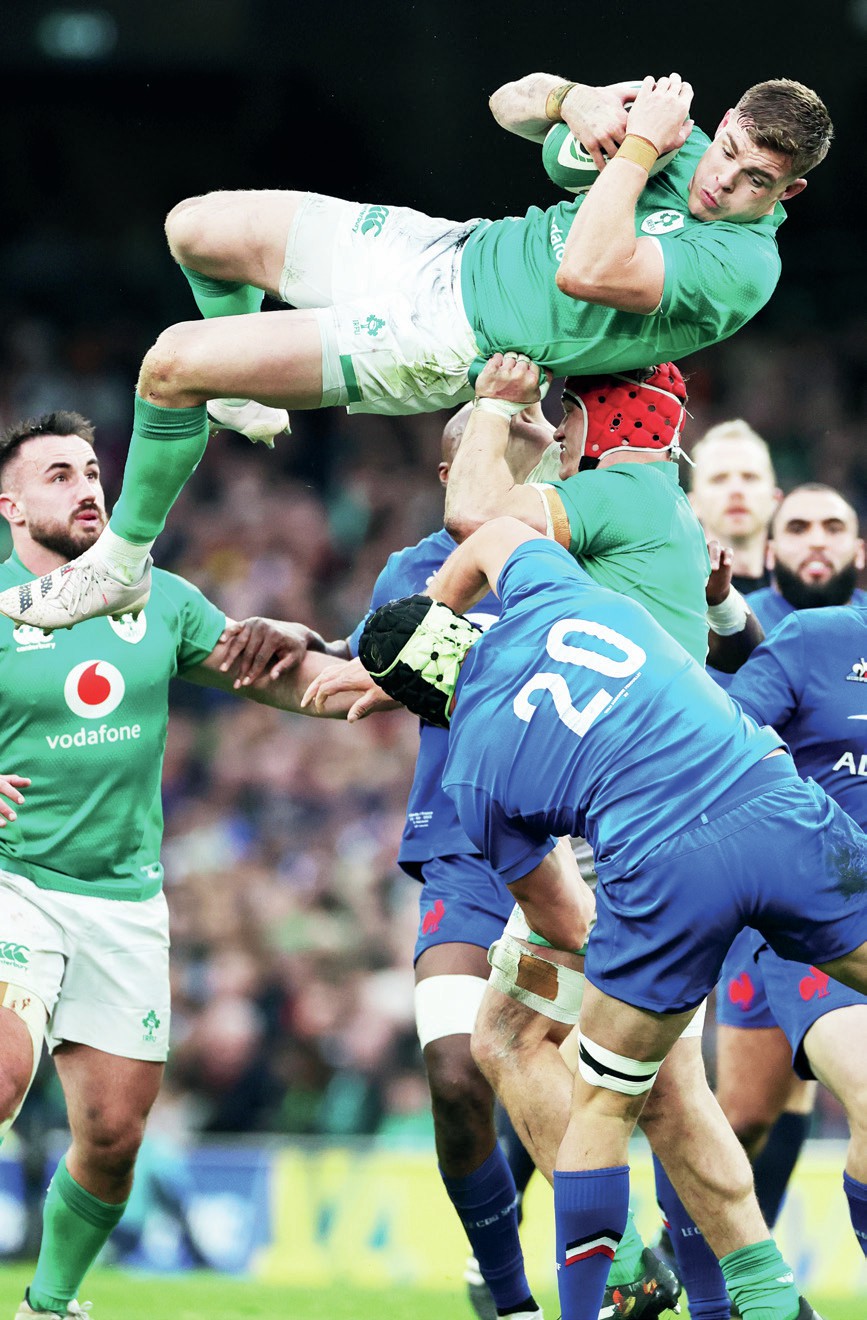Former Ireland and British and Irish Lions player Trevor Ringland has called for rugby to “de-physicalise” by reducing the number of substitutes a team can use in a game.
Ex-Ulster winger Ringland, who was part of the Ireland side that won three Five Nations titles in four years (1982, 1983 and 1985), has witnessed a huge rise in physicality since he stopped playing the game, evidenced by a 2015 Imperial College study that found a 10.2 per cent rise in the weight of players in his position since professionalism entered the sport.
That study found that the average weight of all players had increased by 10.14 per cent from 1995, with back rowers' average weights increasing by 6.7 per cent despite players being one per cent shorter.
After doing his own, albeit less scientific, research Ringland believes that the size of players is responsible for the increases in injury and concussion problems that have plagued the game.
“We need to find a way to de-physicalise – if that's a proper word – the sport. It's just too physical at the minute,” he said, speaking on The Rugby Paper Podcast.
“I did a study amongst a group of players from my era about the level of injury and concussions they'd had, and in 100 years of rugby between the ten of us there were ten concussions. I had two at school, and I didn't have any during my international career whatsoever.
“So the game just needs to look at itself. It's a game that probably doesn't want everyone to be trained to 100 per cent of their physical capability. People should want to get fit, but if it just becomes a war of attrition it becomes boring to watch and just too physical.

“Then you worry about that permeating into the way schools are coached and down into the rest of the game. There are so many plusses that come out of playing the sportbut we have to look at this aspect.” Since the amateur era, both the number of substitutes available and number used has dramatically increased.
In the dawn of professionalism in 1996, tactical subs were allowed for the first time, with the previous number of 21 in a full squad being increased to 22 in 1999 and the number now standing at 23.
In 2011, the last World Cup that allowed squads of 22, 85.12 per cent of substitutes available were used, that increased to a staggering 97.36 per cent at the last World Cup in 2019, compared to just 14.09 per cent in the first World Cup – that Ringland featured in – in 1987. And Ringland believes if the number of substitutes is reduced to the levels they used to be at, players will be forced to lose some of their mass.
“We won the Triple Crown in 1982 and in the three matches there were a total of 19 players used,” he added. “During my career I played in a lot of the club games where there were no replacements, and there were a handful of games where I would be on a team that finished with less than 15 men.
“It was replacements in our day, not substitutes, you had to play the whole match. So if you're 20 stone, you're going to struggle to play the whole match, but you could play 40, 50 or 60 minutes.
“They have to find a way that players are expected to stay on for the whole game, and that in itself will lead them to be slimmer and fitter.”
Despite his concerns, Ringland has been encouraged by the brand of rugby being showcased at the very top of the sport, and sees Ireland's thrilling Six Nations game against France as an example of how the game should be played.
“The Ireland-France game was as good a match as you could get,” he said. “Both teams were out to play rugby in the way we'd like to see it played. I think that's part of the problem with the game sometimes, you need both teams to commit to actually trying to play rugby.
“Rugby can be the best game in the world or the worst game in the world dependent on how you decide to play it. That game was fantastic because both teams went out to play that flowing game that makes it so entertaining.

“It would be brilliant if those two met in the final, it would be a great match and fitting for the game if it did end up with them.”
Having been the world's No. 1 team for a year now, it is hard to dispute that this current Irish team – who won their second Grand Slam in six tournaments this year – are not already the most successful of all time.
Ringland, who served as the UK Special Envoy to the United States on Northern Ireland in 2022, was part of the successful Ireland team during a particularly tense period in The Troubles, showing the power that he believes sport has in bringing people together.
He said: “It's that ability that sport has to move between those different identities and different relationships, especially in a team sport.
“The successful teams I played on at international level were teams of friends. We worked for each other, it was a team of people who challenged themselves to be the best they could be, and challenge those around them to match that as well. Those are the principles I look to, and that you can also apply to a society.”
Stream The Rugby Paper Podcast on YouTube, Apple Podcasts, Spotify, Castbox, Google Podcasts or your favourite podcast provider.
For exclusive stories and all the detailed rugby news you need, subscribe to The Rugby Paper website, digital edition, or newspaper from as little as 14p a day.




























National 1 works perfectly well with 5 on the bench, and interchanges.
Playing with interchanges at all levels simplifies the law book, removing all the special cases around blood bins, front row replacements etc.
As other correspondents have said, it could cut costs.
An interesting hypothesis (that injuries in the modern game are caused by players being bigger than they used to be) but it is nevertheless just that – a hypothesis. It is also conjecture, albeit reasonably sounding, that reducing the number of substitutes will force the heaviest players to reduce weight, the inference being that this will result in fewer injuries. But, I ask, where are the data to back up these ideas? Do the statistics of rugby injuries show that they preferentially occur when bigger players collide with smaller players? Do the statistics show that the injuries preferentially occur when fresh substitutes collide with non-substituted players? I don’t know, but analyses like these are required before one can jump to conclusions regarding substitutes and, perhaps worse still, make new laws. New laws, without prior proper study, may actually make things worse.